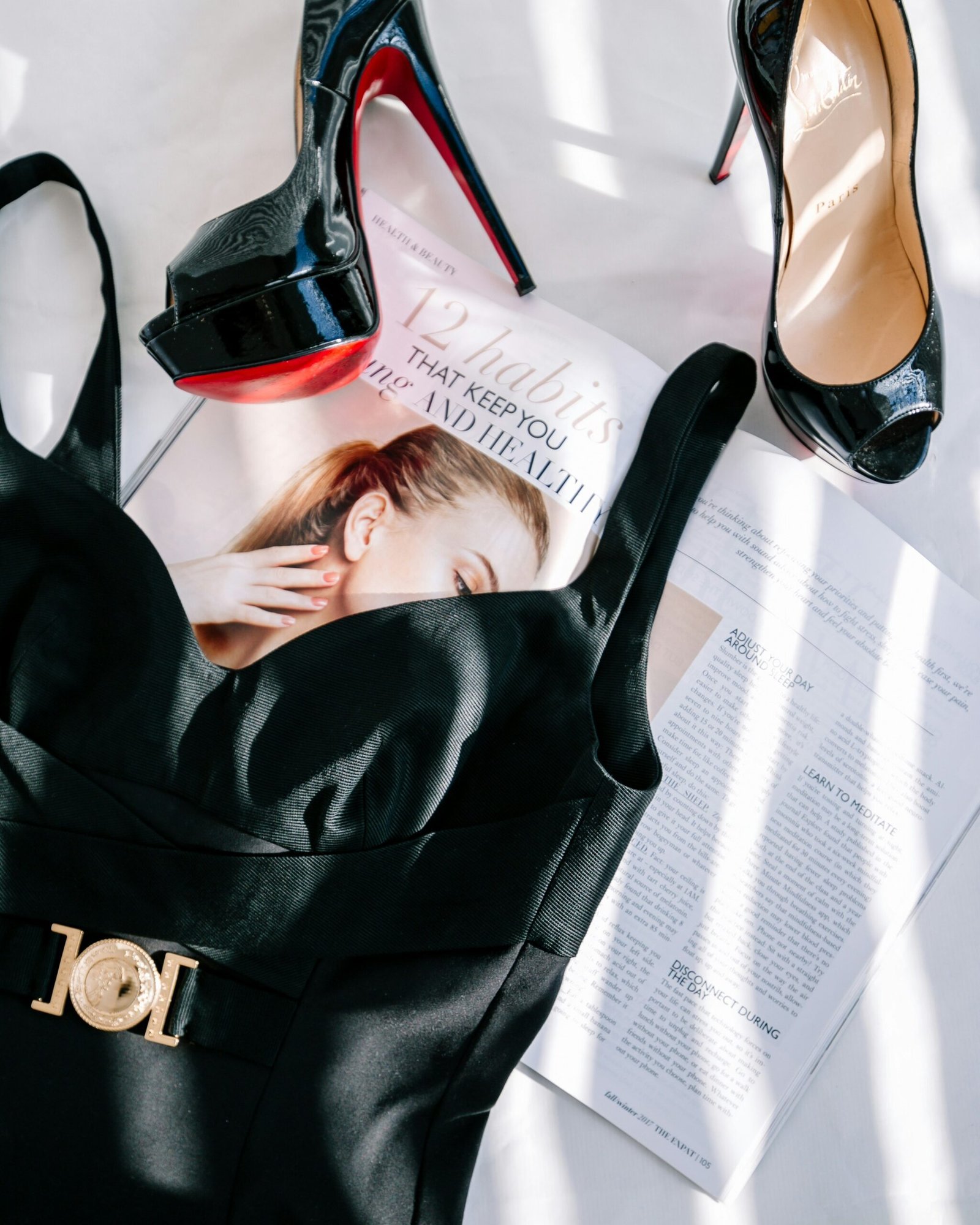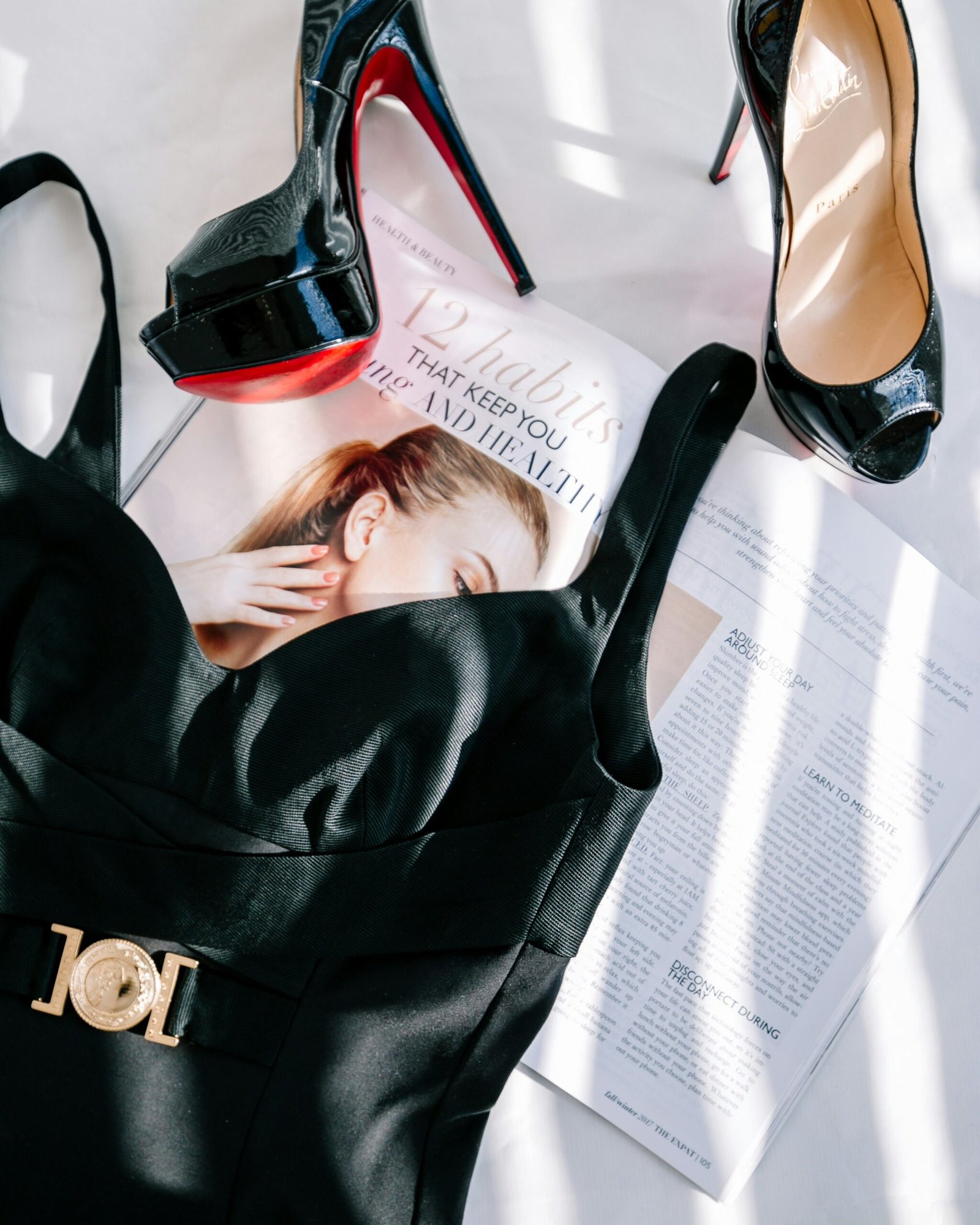
The evolution of red carpet fashion reflects a rich tapestry of cultural and societal shifts, originating from modest beginnings to its current status as an epitome of luxury and glamour. Traditionally, the red carpet was a symbol of high honor and was reserved for royalty and dignitaries; its transition to celebrity events began in the early 20th century at premieres and award ceremonies, notably the Academy Awards. Initially, red carpet attire was conservative and understated, reflecting the social norms and economic realities of the time.
From Conservative Beginnings to Bold Statements
The 1950s marked a turning point in red carpet fashion, coinciding with the rise of Hollywood’s Golden Age. Iconic actresses like Audrey Hepburn and Grace Kelly influenced public taste with their timeless elegance and sophisticated styles. Hepburn’s 1954 Oscars dress and Kelly’s 1955 green gown set high standards that still resonate. The advent of television bolstered the red carpet’s influence, making it a visual spectacle for a global audience. The meticulous attention to detail and craftsmanship in red carpet attire began reflecting the burgeoning luxury fashion industry.
The Media’s Role and Designer Innovations
The proliferation of media coverage in the latter half of the 20th century significantly altered red carpet dynamics. High-profile celebrity endorsements turned red carpet events into high-stakes platforms for luxury designers to showcase their creations. Designers like Valentino, Versace, and Dior capitalized on these opportunities to merge high fashion with celebrity appeal. Intricate beadwork, luxurious fabrics, and innovative silhouettes became synonymous with red carpet grandeur.
Iconic Moments and Trends
The 1990s to the present day saw the red carpet becoming a battleground for statement-making fashion. Celebrities like Princess Diana and Cher made bold choices that redefined luxury fashion’s boundaries. More recently, designers have embraced diversity and sustainability, integrating these elements into their red carpet creations. Influential looks, from Jennifer Lopez’s green Versace dress in 2000 to Lady Gaga’s meat dress in 2010, symbolize the ongoing evolution and the red carpet’s role in reflecting broader cultural narratives.
In conclusion, the evolution of red carpet fashion mirrors societal transformations and highlights the synergistic relationship between celebrities, designers, and the media. The red carpet continues to be a pivotal stage for luxury fashion, illustrating a journey from refined elegance to bold innovation.
Behind the Scenes: Crafting a Red Carpet Look
Creating a red carpet look is a meticulous and highly collaborative process involving designers, stylists, makeup artists, and hairstylists. This journey often begins months in advance with initial concept discussions. Designers present their vision, drawing inspiration from various sources, be it historical periods, contemporary art, or the personal style of the celebrity. These early meetings set the tone for the entire ensemble, from the gown to the accessories, ensuring every detail speaks to the overarching theme.
Stylists play a crucial role, acting as the liaison between designers and the celebrity. They consider the event, the red carpet trends, and the celebrity’s image to curate an outfit that is not only stunning but also feels authentic to the wearer. Once a design is selected, multiple fittings and adjustments ensue to guarantee that the dress is a perfect fit. This often involves tailoring nuances specific to the individual, from adjusting hemlines to accommodating personal comfort details.
Parallel to the fashion chart, makeup artists and hairstylists begin their creative process. Collaboration between these professionals ensures that the look is cohesive from head to toe. For instance, a vintage-styled dress might be paired with classic Hollywood waves and a bold red lip, bringing together a seamless narrative. Trials and practice sessions help in fine-tuning the makeup and hairstyle for longevity and resilience under the scrutiny of high-profile events.
The timeline of preparing for a red carpet event is rigorous. Last-minute changes are not uncommon, whether due to unexpected weather conditions, fittings requiring additional alterations, or spontaneous shifts in the stylistic direction. This dynamic environment demands adaptability and creativity. Each team member must be prepared to solve problems quickly while still maintaining the vision.
Despite the challenges, triumphs are celebrated when a look comes together perfectly. Feedback from these high-stakes settings often influences future designs and trends, reflecting the continuous evolution of luxury fashion. Behind each dazzling appearance, there is a dedicated team whose hard work and collaborative spirit ensure that the art of luxury fashion continues to thrive on the red carpet.
Iconic Designers and Their Red Carpet Masterpieces
In the dazzling world of luxury fashion, few stages are as prestigious as the red carpet. This opulent landscape has been consistently adorned by the craftsmanship of some of the most influential designers, each leaving an indelible mark with their creative prowess. Among these legendary figures, Valentino, Alexander McQueen, and Versace stand out as true architects of red carpet royalty.
Valentino Garavani, often simply known as Valentino, is revered for his timeless elegance and masterful use of vibrant colors, particularly his signature Valentino Red. With a design philosophy rooted in classicism and sophistication, Valentino’s creations often feature intricate embroidery, delicate lace, and luxurious fabrics that exude regality. Iconic Valentino gowns have graced countless red carpets, worn by celebrities such as Julia Roberts and Cate Blanchett, making him a perennial favorite during award seasons.
Alexander McQueen, the eponymous fashion house established by Lee Alexander McQueen, has become synonymous with daring innovation and theatrical drama. McQueen’s design ethos was characterized by a fearless blend of fantasy and reality, often highlighted through dramatic silhouettes, meticulous craftsmanship, and avant-garde aesthetics. The late designer’s creations, such as the stunning dress worn by Sarah Jessica Parker at the 2006 Met Gala, continue to captivate audiences and push the boundaries of red carpet fashion.
Versace, helmed by the indefatigable Gianni Versace until his untimely death, and subsequently by his sister Donatella Versace, is renowned for its bold, provocative style. Versace’s red carpet masterpieces are celebrated for their audacious use of vibrant prints, seductive cuts, and opulent materials. The brand has a storied history of iconic moments, including Jennifer Lopez’s plunging green dress at the 2000 Grammy Awards, which left an everlasting impression in the annals of fashion history.
These designers, through their distinctive artistry and unparalleled craftsmanship, have not only elevated red carpet fashion but also redefined the landscape of luxury fashion. Their visionary creations continue to inspire and set the bar high, ensuring their place as revered icons in the world of haute couture.
As we gaze into the crystal ball of red carpet fashion, several pivotal movements promise to redefine its landscape. One of the most influential trends on the horizon is sustainability. The fashion industry is increasingly responding to environmental concerns, shifting towards practices that minimize ecological impact. From using ethically sourced materials to adopting zero-waste manufacturing processes, designers are pioneering ways to make luxury fashion more sustainable. This trend doesn’t just aim to reduce carbon footprints; it also aspires to educate and influence high-profile wearers to invest in eco-friendly couture.
Another transformative force is the integration of technology into fashion design and presentation. Advances such as 3D printing, smart fabrics, and augmented reality are no longer confined to the realm of science fiction; they are becoming a creative playground for avant-garde designers. These technologies offer endless possibilities, from creating intricate, bespoke garments to transforming how fashion is showcased on red carpets. Imagine dresses that change color with the push of a button or outfits that light up in response to social media interactions—these are not far-off fantasies but imminent realities.
Diversity and inclusion are more than just buzzwords; they are shaping the very ethos of contemporary fashion. The growing call for representation across ethnicities, genders, sizes, and abilities is being echoed by a new generation of designers and fashion houses. This push towards inclusivity ensures that the red carpet becomes a universal stage where everyone, regardless of background, can dazzle. Emerging designers are leading this charge, crafting collections that celebrate individuality and break away from traditional standards of beauty.
Interviews with fashion analysts and rising designers highlight a significant change in attitudes towards red carpet attire. They foresee a future where extravagant fashion coexists with ethical consciousness and innovative technology. As cultural values evolve, so too does the fashion that embodies them, indicating a rich, multi-faceted future for red carpet royalty.


